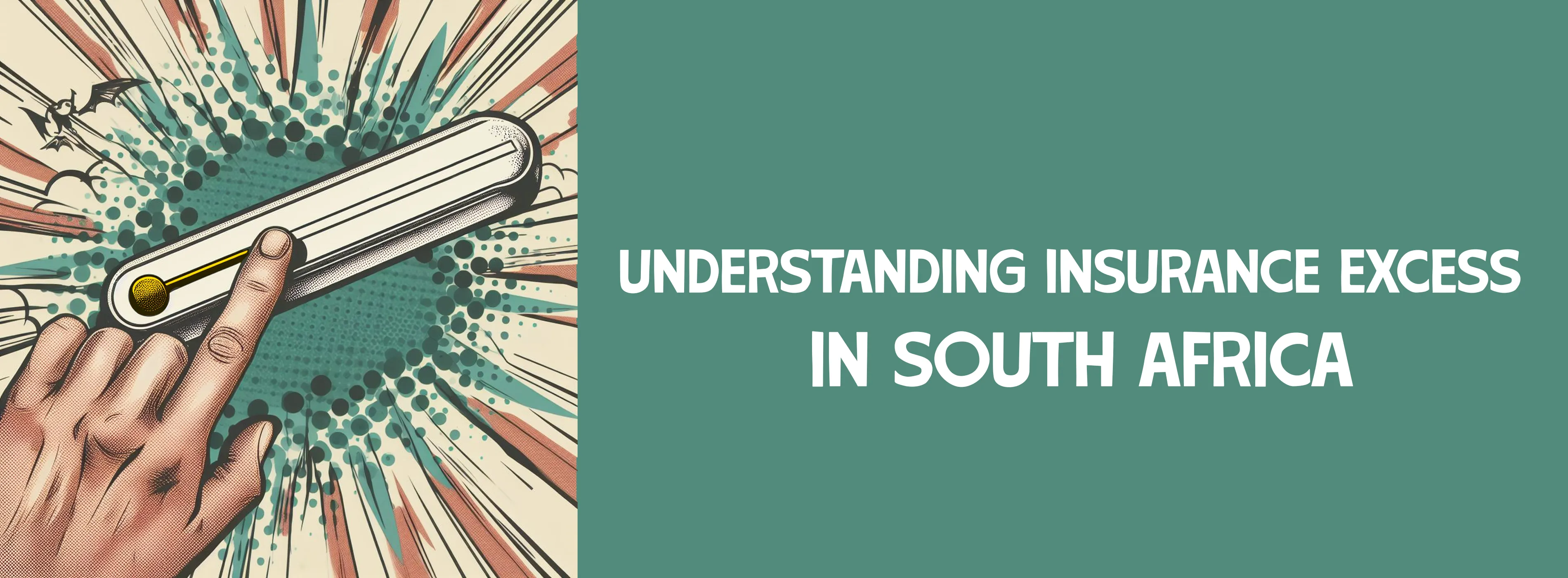Insurance excess and how it works:
In insurance, the excess is the initial amount you, as the policy holder, must contribute towards a claim before your insurance coverage kicks in.
So before your insurance company pays for any damages, you first pay out of pocket.
But before you freak out, the excess amount is usually a small fraction of the overall claim value and exists to protect the community from over-claiming for minimal damage incidents.
Different types of excess:
- Standard Excess: a fixed amount you must pay towards a claim before the insurance company pays out the rest. The standard excess is the most common type, which applies to most insurance policies.
- Standard/Special Additional Excess: for car insurance, there may be specific conditions where a different excess is applied, either added or reduced from your chosen excess.
These are fully stipulated on your policy schedule, but here are some specific cases:
- When claiming within 6 months of your policy start date.
- You are under 25, or your license is less than 3 years old.
- If neither the regular driver nor their spouse is driving the vehicle at the time of an accident.
- Percentage Excess: Some insurance policies have a percentage excess, which means the excess amount is calculated as a percentage of the claim amount.
- Zero-rand Excess: These policies cover any damage or loss to your car without requiring the customer to pay an excess fee.
However, it's important to note that having a R0 excess car insurance policy may come at a higher premium cost than policies with an excess fee.
Understanding the excesses that apply to your insurance policy:
Here are just a few reasons why understanding your insurance excess is crucial.
- Cost: The excess amount varies widely depending on the type of insurance policy and the insurer.
- Coverage: Different policies can have different excesses for different types of claims. It's essential to understand the specific terms of your policy to ensure you have the right coverage.
- Claims: Understanding the excess can help you decide whether to make a claim or not.
- Risk: A policy with a high excess may be cheaper, but it may also require you to take on more financial risk in case of a claim.
Tips for budgeting for potential claims and making informed decisions about your coverage
- Choose the right coverage: Consider the level of coverage, excess, and premium, and compare policies from different providers to find the best deal.
- Understand your policy: Read your insurance policy carefully and understand the terms and conditions, including the excess, coverage limits, and exclusions.
- Prioritise your expenses: Focus on paying for the essential items first; this can help you avoid overspending and ensure that you have enough money set aside to cover any potential claims.
- Set aside an emergency fund: Set aside some money each month to build up an emergency fund that can be used to cover any excess or unexpected expenses that may arise.
- Review your policy regularly: You may also want to shop around and compare policies from different providers to ensure you're getting the best deal.
- Seek professional advice: If you still need help figuring out how to budget or make informed decisions about your coverage, seek advice from an insurance professional or financial advisor.
How to compare different excesses when shopping for insurance
When shopping for insurance, try to compare different insurance companies’ excesses to ensure that you have the right level of coverage for your needs.
Step 1: Start by understanding what excess is and how it works.
Step 2: Consider the level of risk associated with your property, vehicle, or business and determine the level of coverage you need.
Step 3: While comparing excesses from different providers, consider the level of excess for different types of claims, like damage to your property, theft, or liability claims.
Step 4: When comparing excesses, consider your budget and how much you can afford to pay out of pocket in case of a claim.
Step 5: Finally, when comparing excesses, be sure to read the terms and conditions of each policy carefully, including any exclusions or limitations on your coverage.
In summary, it's essential to compare different excesses and consider the level of coverage you need, your budget, and the terms and conditions of each policy.
By doing so, we guarantee you’ll find the right level of coverage to suit your needs.
Do yourself a favour and get a quote!
Please Note: The information provided above is for informational purposes only; you should not construe any such information as legal or financial advice.
Pineapple (FSP 48650) is underwritten by Old Mutual Alternative Risk Transfer Insure Limited, a licensed Non-Life Insurer and authorised FSP. T&Cs apply. Premium is risk profile dependent.


.webp)
